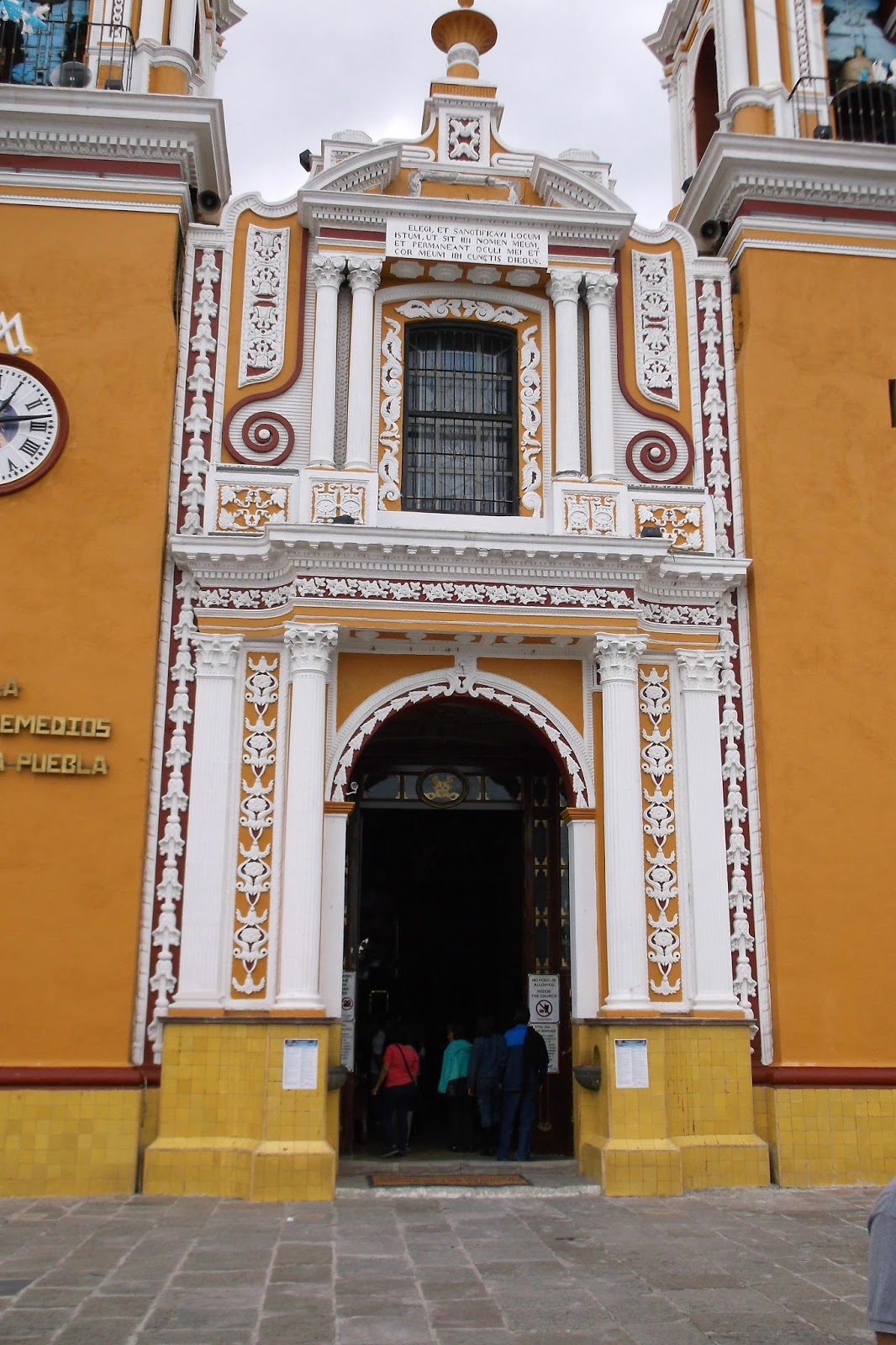Our first day in Mexico city!! This is a side picture of Mexico Cathedral. About 6:15 in the early evening. It was overcast and misting but so exciting to be in Mexico. 7/11/14
Cholula. The Great Pyramid. Nuestra Senora de los Remedios bult on top of the Great Pyramid This beautiful church was built in May of 1574. The tile reminds me of the Talavera tile that we saw in Cholula. Very low on cash but still bought a small piece to put on the window sill! 7/12/14
A sideview of Nuestra Senora de los Remedios. 7/12/14
A small sanctuary connected to Nuestra Senora de los Remedios 712/14
Close to Nuestra Senora de los Remedios 7/12/14
This is the Santo Domingo Church in Oaxaca. Gorgeous, very old church. Due to size and location it was a very useful church during the revolutionary wars of Mexico. 7/13/14
 The Church of Santa Maria. Located about 22 miles outside of Oaxaca . Situated next to an old friend the magnificent Tule Tree. 7/26/14
The Church of Santa Maria. Located about 22 miles outside of Oaxaca . Situated next to an old friend the magnificent Tule Tree. 7/26/14
This massive tree is between 1,200 to 3,000 years old. The trunk circumference is a "wow factor" of 137.8ft and 116ft in height! The Zapotec legend that it was planted by the Aztec Wind God and Priest named Pechocha 7/26/14
Saint Francis of Assisi Church in Coyoacan, Mexico. Frida Kahlo's home town.
8/5/14
azul y blanco tile back splash with cross. Lovely. 7/14/14
Puebla Cathedral. I really enjoyed

Puebla de los Angeles
Our host Michelle prepared a delicious Italian meal that night! Fantastic house and view of the Sierra Madre Mountains. We climbed Mt. Picacho the next day. 7/26/14
The summit of Mt. Picacho 7/26/14
Catholicism in Mexico seems to be a very strong cohesive in the Mexican culture and Mexico's rich history. Throughout my stay in Mexico I noticed many Catholic churches. There was a sense of religious reverence among many people I encountered. A culture of faithful who bring their issues, joys, prayers and problems to the cross. I think that perhaps the cross road/common ground of religion for the Aztec people and the importing of Catholicism from Spain would be prayer. When all else fails we pray for divine intervention. A hand of grace or a shower of rain for crops. The Spanish seemed to find a common denominator when they tortured, conquered and dominated the Aztec people. "The conquest of Mexico was part of the Spanish colonization of the Americas. The Spanish had been awarded this territory by a Pope named Alexander V1 in 1493, and as far as they were concerned the land and its wealth was rightfully theirs. They saw nothing of value in the indigenous culture, and more or less set out to systematically destroy everything that had no monetary value." To me this is tragically displayed in Diego Rivera's mural illustrating Mexico's sometimes torrent history.
My Catholic faith has always bend a kind of compass built within my life. Guiding without a spoken word only a feeling, probably defined as faith. However, I will have say that sometimes I struggle when I consider the beauty of Catholicism and of its use in serving as a directive for another countries selfish want at the expense of indigenous people. This trip has helped me to look deeper into what might seem natural but might have an undertone of indoctrination of a country of people with an inheritance and belief of how important nature truly is to humanity's survival. Through Mexico's historic struggle of self/ and of the "other " , she came to understand Catholicism partly through the great story of Juan Diego. Often we need more than just words or violence. I believe the people of Mexico saw through Juan Diego's miraculous experience with Our Lady a sign of hope spearheading Catholicism.
- www.sacred-distinctions.org
- http://oncedelivered.net
- enwikipedia.org













No comments:
Post a Comment